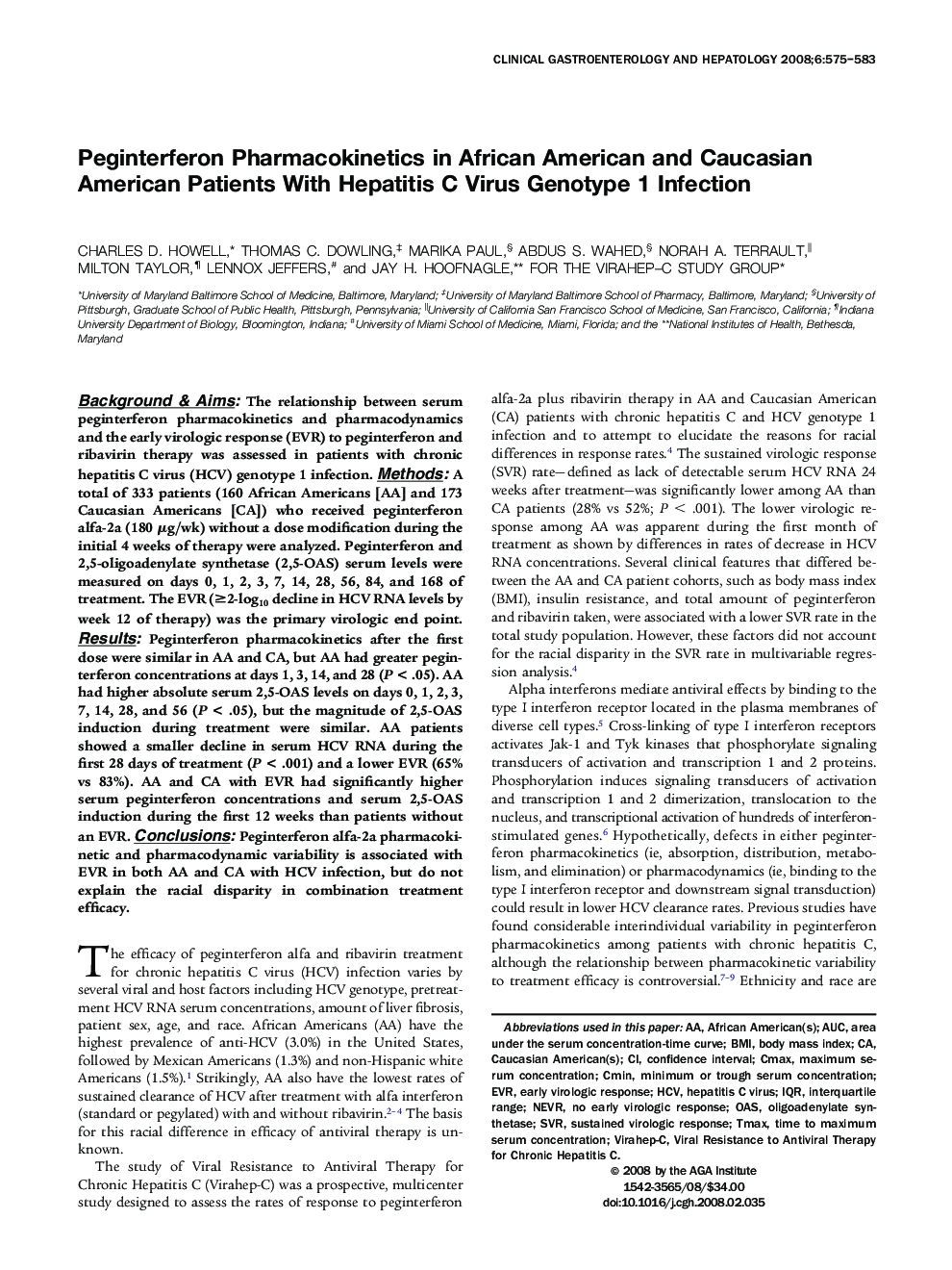| Article ID | Journal | Published Year | Pages | File Type |
|---|---|---|---|---|
| 3284541 | Clinical Gastroenterology and Hepatology | 2008 | 9 Pages |
Abstract
Background & Aims: The relationship between serum peginterferon pharmacokinetics and pharmacodynamics and the early virologic response (EVR) to peginterferon and ribavirin therapy was assessed in patients with chronic hepatitis C virus (HCV) genotype 1 infection. Methods: A total of 333 patients (160 African Americans [AA] and 173 Caucasian Americans [CA]) who received peginterferon alfa-2a (180 μg/wk) without a dose modification during the initial 4 weeks of therapy were analyzed. Peginterferon and 2,5-oligoadenylate synthetase (2,5-OAS) serum levels were measured on days 0, 1, 2, 3, 7, 14, 28, 56, 84, and 168 of treatment. The EVR (â¥2-log10 decline in HCV RNA levels by week 12 of therapy) was the primary virologic end point. Results: Peginterferon pharmacokinetics after the first dose were similar in AA and CA, but AA had greater peginterferon concentrations at days 1, 3, 14, and 28 (P < .05). AA had higher absolute serum 2,5-OAS levels on days 0, 1, 2, 3, 7, 14, 28, and 56 (P < .05), but the magnitude of 2,5-OAS induction during treatment were similar. AA patients showed a smaller decline in serum HCV RNA during the first 28 days of treatment (P < .001) and a lower EVR (65% vs 83%). AA and CA with EVR had significantly higher serum peginterferon concentrations and serum 2,5-OAS induction during the first 12 weeks than patients without an EVR. Conclusions: Peginterferon alfa-2a pharmacokinetic and pharmacodynamic variability is associated with EVR in both AA and CA with HCV infection, but do not explain the racial disparity in combination treatment efficacy.
Keywords
Related Topics
Health Sciences
Medicine and Dentistry
Gastroenterology
Authors
Charles D. Howell, Thomas C. Dowling, Marika Paul, Abdus S. Wahed, Norah A. Terrault, Milton Taylor, Lennox Jeffers, Jay H. Hoofnagle, Virahep-C Study Group Virahep-C Study Group,
